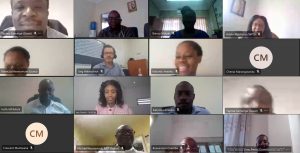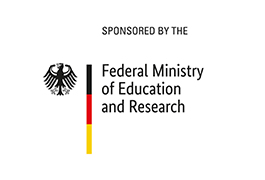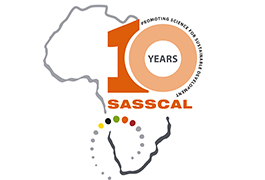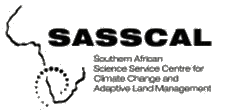The Southern African Science Service Centre for Climate Change and Adaptive Land Management (SASSCAL) successfully hosted its first virtual SRTC Meeting for the Green H2Atlas-Africa project on Tuesday, 23 March 2021. H2Atlas-Africa project is funded by the German Federal Ministry of Education and Research (BMBF). The project is the first-phase of a Go Green Go Africa Hydrogen initiative of BMBF and African partners in the Sub-Saharan region (SADC and ECOWAS countries) to explore the potentials of green hydrogen production from the enormous renewable energy sources.
The SRTC is chaired by SASSCAL Executive Director Dr Jane Olwoch and comprised of experts from different fields of the participating countries in Southern Africa. The SRTC provides input and participate in all decisions regarding the H2-ATLAS Project and the follow-up phases.
The meeting was attended by the technical committee members, Southern African Development Community (SADC), Centre for Renewable Energy and Energy Efficiency (SACREEE) and various key experts in Green Hydrogen sectors in SADC from Ministry of Industrialisation, Trade in Namibia, CSIR Energy Centre (RSA), WaterNet, University of Western Cape, Department of Science and Technology (RSA), INTSIMBI Future Production Technologies, Environmental Management Agency (Zimbabwe), Tanzania Renewable Energy Association and Universidade Eduardo Mondlane (Mozambique). The main objectives of the meeting, was to clarify the roles and responsibilities of the SRTC and highlight on the project status in Southern Africa.

Figure 1: Screenshot of attendees during the SRTC meeting
Speaking during the SRTC Meeting, Dr Jane Olwoch, highlighted how Green Hydrogen has caught the world’s attention in the energy sector. With the possibility to end the world’s dependency on fossil fuel, many in the sector are scrambling to play a part in this promising industry. “Green hydrogen has emerged as a favourable approach to climate change mitigation as well as to revamp the world economy” she added. During the meeting, it was also noted that more countries taking steps to be in the forefront in developing what could be a major source of clean energy in the future, Africa and particularly southern Africa has not missed this unique opportunity to make hydrogen an important part of our clean and secure energy source for the future.
Dr Olwoch acknowledged the support of BMBF to make this move in Africa also possible and emphasised the Atlas of green hydrogen potential is one of the biggest practical action around green hydrogen in SADC region. She envisions with the support of SRTC, “we will be able to have output that will take us to the next steps in the SADC region”.
During the SRTC Meeting, a presentation was made on the roles and responsibilities of the SRTC as well as the progress on activities. Similarly, Dr. Eng. Katundu Imasiku, SASSCAL Renewable Energy Expert for H2Atlas-Africa Project gave a detailed presentation on schedule of next activities by SRTC. Every presentation was followed by active and constructive discussions with participants aiming to reach more clarity in their future responsibilities.
In his closing remarks, Mr Kuda Ndhlukula, SACREEE Executive director and vice chairperson of the SRTC acknowledged the support and guidance of the committee on their technical input into how the next project deliverables will be achieved. He further thanked the committee for their readiness and expertise.




